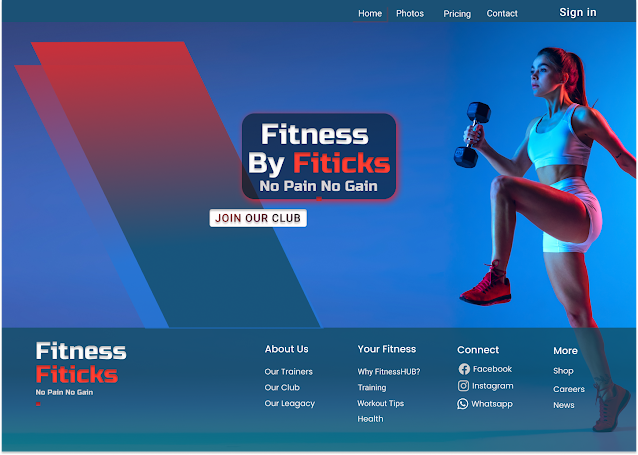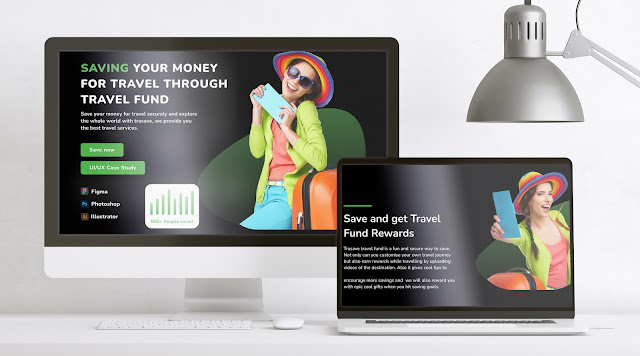What is Web Design? The Ultimate Guide To Website Design The process of organising content online through planning, conceptualization, and design. Today, building a website involves more than just its appearance; it also takes into account its whole operation. User interface design, web apps, and mobile apps are all included in web design.
 |
| beautiful website design 2023 |
Did you realise that the way your website is designed can significantly affect how well it performs in search engines like Google? This post will provide you with some useful tips on how to design a website that not only looks great but also works well and achieves high search engine rankings.
This essay will discuss:
- Getting Motivated
- A Tool for Web Designing
- Visual Components
- Functioning Components
- Adaptive vs. responsive web design: types of websites
Finding Inspiration:
Designers scour the world for ideas. Some of the top websites to inspire your creativity are listed below:
Check out our blog post for more tips on finding inspiration here
Choosing a Web Design Tool
Using a desktop application or a website builder are the two primary methods for creating websites. The tool you choose to use will be greatly influenced by the size of your team, your budget, the kind of site you want to build, and its technical specifications.
Designers must generate their designs for desktop apps and transmit them to a development team so they may be turned into code. Photoshop and Sketch are the most often used desktop applications for website design.
This is usually the norm for large and/or complex websites because it enables the designer to concentrate on the overall aesthetic while delegating all technical difficulties to the development team. Unfortunately, because multiple resources, skill sets, and team members are needed, this process can be costly and time-consuming.
It is advantageous to utilise a website builder to create a website with fewer technical needs in order to avoid hiring a developer.
2. Website Builders
Today's market is flooded with website builders that provide a variety of features and services. Popular website builders with varying design capabilities, template choices, prices, and overall editing experiences include Wix, Squarespace, Webflow, and Pagecloud. Make sure to do your homework, test out free trials, and decide which platform best suits the requirements of your website.
Website builders produce responsive or adaptive websites, each of which offers a unique construction experience. Below, we'll go over these ideas in more detail so you can decide which builders are right for you. Understanding the possibilities and constraints of various website design tools is crucial if you don't know how to code. For instance, despite Wordpress being the most popular.
Web Design Elements
It's crucial to take both the website's appearance and functionality into account when designing it. The performance and usability of the site as a whole will be maximised by using these aspects. The usability of your website is determined by factors like an intuitive user interface, appropriate use of graphics and images, well-written and strategically placed text, and colour scheme. The performance of your website includes its loading time, position in searches, searchability, and capacity to draw in visitors.
Visual elements
Here is a brief summary of the components you should take into account when designing your website to make sure everything functions properly. There are hints and pointers in each section to get you going.
 |
| website design |
Layout
The usability and functionality of your site will be significantly impacted by the way you decide to organise your content. There are a few key ideas to bear in mind while selecting a layout, but there are no set guidelines to follow. Avoid using an overly stimulating layout that might distract from the messages you want to convey and keep in mind the needs of your target audience.
Shapes
The use of graphic elements in web design can help seamlessly integrate text and images, and help with the site’s overall appearance. Combining beautiful colors and shapes can help direct the attention of your sites visitors and contribute to your site’s overall flow.
Spacing
For websites to be aesthetically beautiful and simple to use, spacing is a crucial component. Your design will use spacing in one form or another into every aspect. The right use of whitespace is essential to achieving the ideal balance between text, images, and graphics in a design. Consistent spacing can make it easier for users to navigate your website. Modern web designers definitely prioritise the idea of whitespace.
Images & Icons
Amazing designs can communicate a lot of information in just a few seconds. This is made possible with the use of powerful images and icons. Choose images and icons that support and strengthen your message. A quick Google search for stock images and icons will generate thousands of options. To help simplify your search, here are a few favourites:
No cost pictures and icons
Premium photos and icons from Pexels, Unsplash, and IconMonstr
Shutterstock (Getty) (Getty)
Videos
Web designers are increasingly incorporating video into their designs. When used effectively, videos can provide people with an understanding or experience that text or image alone cannot provide. Remember that guests' eyes are drawn to moving pictures, just like when a TV is on in a restaurant. Make sure your movies don't conflict with or overshadow other crucial components.
Related: The Correct Way to Use Video Background on Your Website!
Functional elements
When building your website, it is essential to take these functional components into account. For your website to perform well and provide your users with the best experience, good search engine rankings are essential.
Navigation
One of the key factors in determining whether your website is operating effectively is its navigation. Depending on your target audience, your navigation may have several functions, including facilitating the discovery of your site's features by new visitors, facilitating easy access to your pages for recurring visitors, and enhancing the user experience for all visitors. For more navigational advice, look over these best practices.
User Interactions
Depending on their device, your site visitors can engage with it in a number of different ways (scrolling, clicking, typing, etc.). The finest website designs make these interactions simple so that the user feels in charge. Here are a few illustrations:
Never let music or video play automatically
Never highlight text unless it can be clicked.
Ensure that every form is mobile-friendly.
Skip the pop-ups
Don't use scroll jacking.
Site structure
Both search engine optimization (SEO) and user experience (UX) are significantly influenced by a website's structure (SEO). Your website should have no structural problems that prevent users from effortlessly navigating it. It's likely that "crawlers" are having trouble navigating your site if users are having trouble doing so. A crawler, also known as a bot, is an automated programme that scans your website to assess its functionality. A poor user experience and a low site ranking can result from poor navigation.
Responsive Websites
Flexible grid layouts can be used on responsive websites
that are based on the percentage that each element occupies in its container.
For example, if a header occupies 25% of its container, that percentage will
not change no matter how the screen size changes. While adaptive websites only
adapt when they reach a breakpoint, responsive websites are constantly changing
to fit the screen size. Responsive websites can also use breakpoints to create
a unique look for each screen size.
E-commerce
Website design includes e-commerce websites heavily. The ideal online shopping experience for your clients depends on having an online store that is simple to use, informative, and accurately represents your products.
Check out our article on the 5 simple steps to building an e-commerce website if you want to learn more about opening an online store!
Next Steps
You should now have a better understanding of the fundamentals of web design after reading this article. Let's explore some essential components for creating a website that is both attractive and useful:
1. The user should always come first: Since your users will eventually decide if it is worthwhile to visit your website, user experience should be prioritised in your design.
2. Select the best website builder for your needs by considering the main purposes of your website and picking a builder that will satisfy those purposes.
3. Maintaining a balance between your text, graphics, multimedia, and colour scheme will help you avoid creating an overly stimulating website that takes attention away from the messages you're trying to convey.
 |
| website mockup design with unlimited guide |



